Overview
-
TOOBOE (Howl)
TOOBOE (Howl) is a solo dance performance by Yuko Kaseki, co-created with Marc Ates. The production’s starting point was based on a story of the same name by Japanese author Hyakken Uchida (1889-1971). The story is told through illogical, odd happenings that emerge from the ordinary. Through his peculiar vision of consideration, consciously simple episode of expression success to find out the cleft in the ordinary construction. Through the door to the other side, to possibility of fantasy level, it gives one side anxiety on the other side appear the strange humour.
Yuko Kaseki expose this situation by absurdity as same as humorous, with brevity way exist herself and her body in this world. Premiered in November 1998 at the loplop in Berlin.
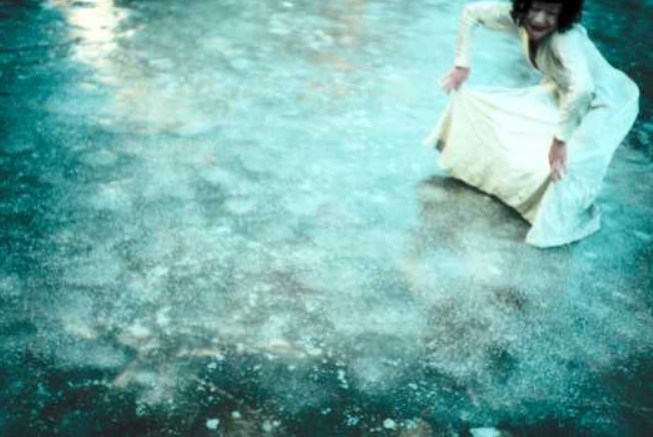
- Performer(s)
- Yuko Kaseki
- Director/Choreographer
- Yuko Kaseki
- Venue
- DOCK11 (Berlin)
- Year performed
- 2002
-
Through the tunnel. There was a house
For the first time in a long time, I walked around the town where I was born and raised. The takoyaki restaurant by the canal, the chimney of a deserted sentō, a tunnel around 1m high... between the nostalgic scenes were karaoke bars and convenience stores that I had never seen before. Soaking my mind and body in this town where I had spent my childhood untroubled, something unexpected spilled out of the time and space accumulated there. I waited patiently for it to spill out again.
- Participated in the 6th OSAKA DANCE EXPERIENCE: 1st half
- Osamu Jareo and Misako Terada Dance Performance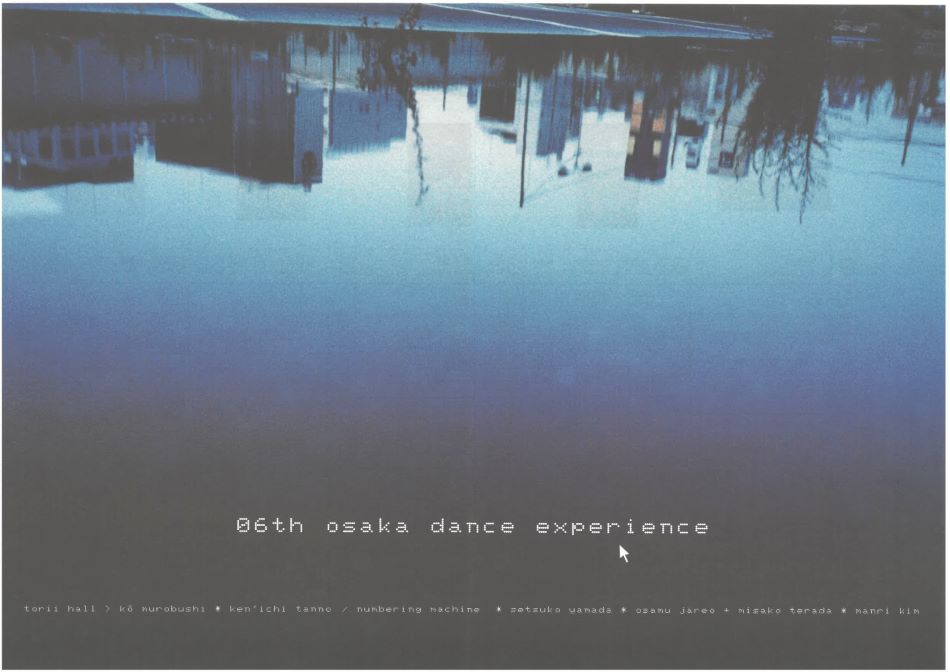
- Performer(s)
- TORII HALL
- Director/Choreographer
- Osamu Jareo + Misako Terada
- Venue
- TORII HALL
- Year performed
- 2000
-
Three
Three modern-day dancers copy three masterworks by the founders of butoh: Tatsumi Hijikata, Kazuo Ohno and Yoshito Ohno. Mikiko Kawamura, Takao Kawaguchi and Dai Matsuoka respond to the spirit of butoh with modern methods. Kawamura reproduces Hijikata’s "Hosotan" (Story of Smallpox), Kawaguchi reconstructs Kazuo Ohno’s "Admiring La Argentina", and Matsuoka recreates Yoshito Ohno’s "Hijikata Sansho". With careful study of archived footage from the original performances and intense training, they transport butoh to the here and now.
- Tokyo Real Underground festival (Tokyo Tokyo FESTIVAL Special 13): 1 April - 15 August 2021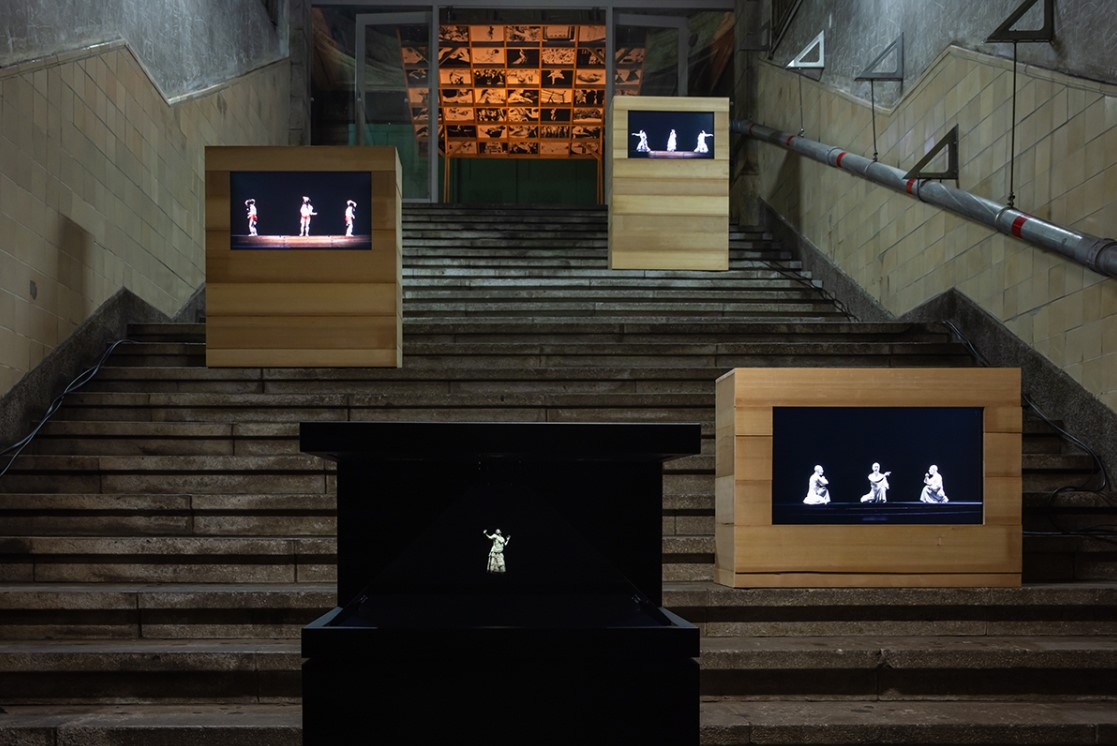
- Performer(s)
- NPO Dance Archive Network
- Director/Choreographer
- Naoto Iina
- Venue
- Filmed at Former Hakubutsukan Dobutsuen Station [Museum Zoo Station]
- Year performed
- 2021
-
Thoughts on Yesenin
The Russian poet Sergei Yesenin, who had many colourful relationships, including marriages to Isadora Duncan and Tolstoy's granddaughter, was considered the 'last of the rural poets', writing about nature and comparing rural women to the Virgin Mary. He regarded himself a 'distanced poet', a wanderer with a fear of restraint. Taking from his final message the idea that "Life is a joke, but if there is no greatness in life, it cannot be that there is only greatness in death", the work contrasts Yesenin with the character of a clown.
- Participated in the ACA National Arts Festival 1975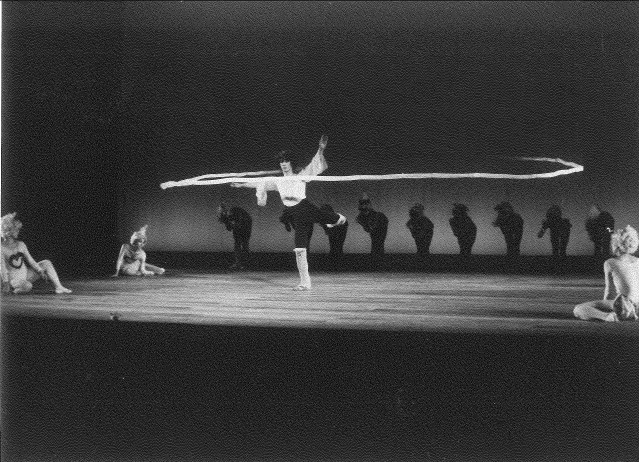
- Performer(s)
- Wakamatsu Miki & Tsuda Ikuko Free Dance Performance
- Director/Choreographer
- Miki Wakamatsu, Ikuko Tsuda
- Venue
- Toranomon Hall
- Year performed
- 1975
-
Thieves Guild
The first Tohoku region performance by Daizu-ko Farm, who celebrate the human spirit. The stage and seating were set up over the flowing Hirose River, beneath the Ohashi Bridge near Aoba Castle, with an eight-metre tall stained glass window erected on the river’s surface behind the stage. The performance portrays the colourful lives of the river dwellers - the women as 'yotaka' [low-ranking prostitutes], the men as thieves - stealing, laughing, getting caught and crying, depicted in muddy, unpretentious humanity.
The performance was repeatedly interrupted by rain, and the river eventually flowed over the stage. The piano, which had been used since their street performance days, was finally put to rest.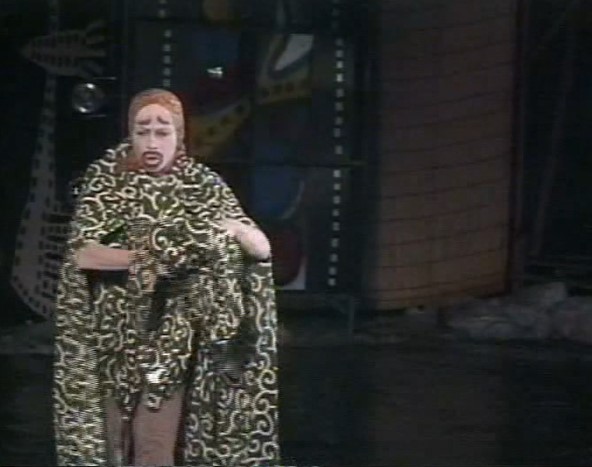
- Performer(s)
- Butoh Orchestra Daizu-ko Farm
- Director/Choreographer
- Hoshino Rashinban
- Venue
- Temporary outdoor stage under Ohashi bridge at the Hirose River
- Year performed
- 1999
-
“There’s Another Way to Look at It” & “Untitled”
This piece, performed as one of a series of butoh performances for "Whispers of Strange Matter II O", consists of solo and duo performances by Mitsutaka Ishii and Masahide Omori. Emphasising the improvisational nature of butoh, the solo parts are entirely unchoreographed, and the duo sections created with just a few prior arrangements. A loose and highly improvised composition, each dancer attempts to see how they can blend with the body of the other.
-Ammonite Claw Extravaganza
-Bigakko Annual Report 2011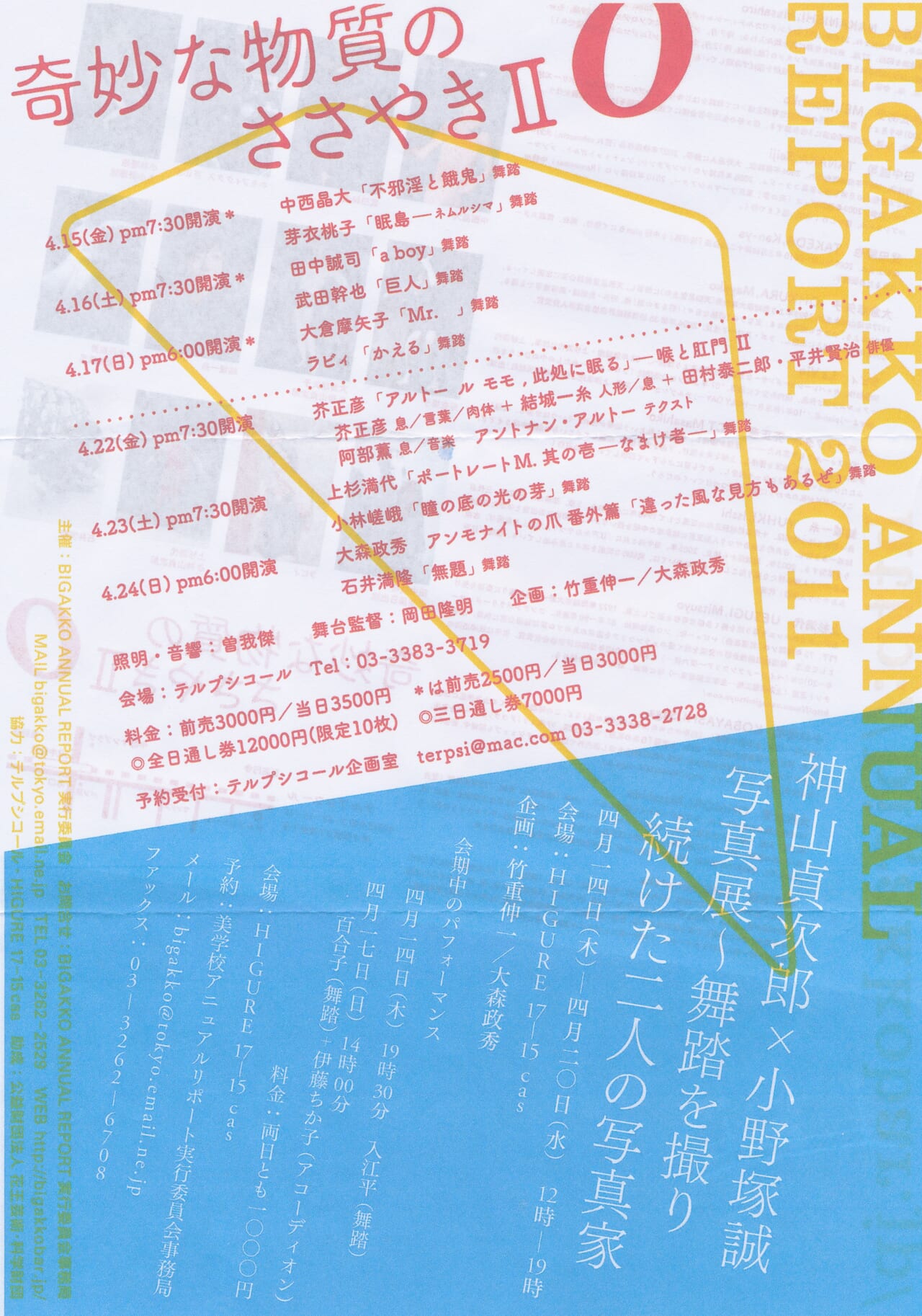
- Performer(s)
- Terpsichore
- Director/Choreographer
- Masahide Omori, Mitsutaka Ishii
- Venue
- Terpsichore
- Year performed
- 2011
-
Theoria of the Mirror
A new butoh work by Akiko Motofuji examining the issues of existence, nothingness, time and eternity, based on the book 'Kagami no Theoria' [Theoria of the Mirror] by Chimako Tada and incorporating a version of the mirror legend from Nagoya. It was performed as part of 'Eventalk Part VI: Visualising Tatsumi Hijikata' organised by the Aichi Arts Centre. Led by Akiko Motofuji with the Asbestos-kan troupe, a collaborative butoh atmosphere was created featuring Yoshito Ohno and a special guest appearance by Kazuo Ohno.
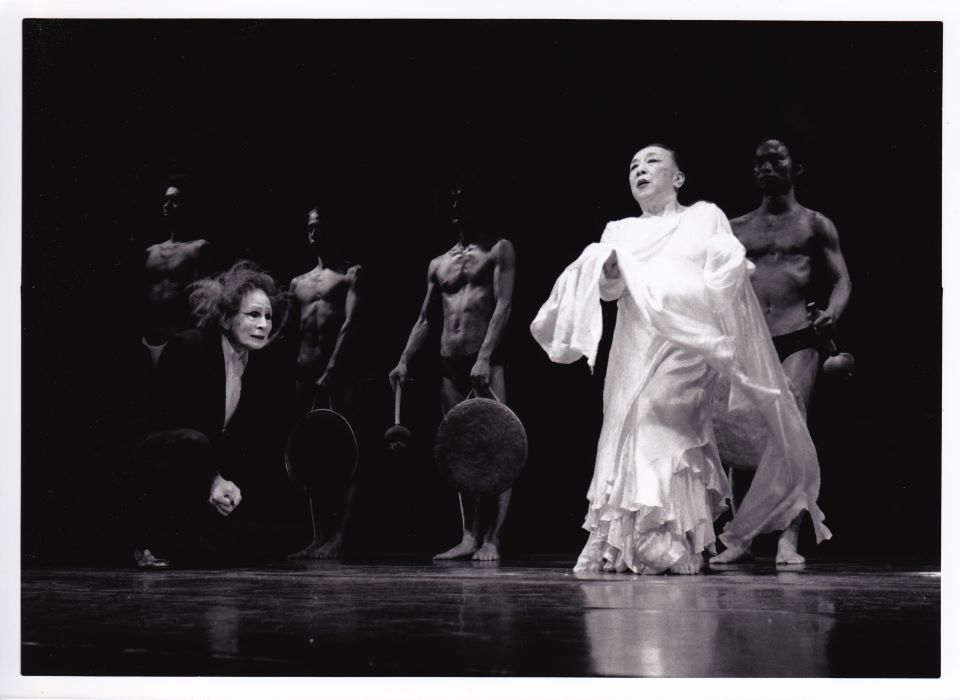
- Performer(s)
- Asbestos-kan
- Director/Choreographer
- Akiko Motofuji
- Venue
- Aichi Prefectural Art Theater : Mini theater
- Year performed
- 1997
-
Terminal Paranoid
A site-specific work performed at an abandoned boarding school in Graz, Austria.
The piece was created during a two-week intensive workshop with students of Yumiko Yoshioka, and co-choreographed by Eugeny Koylov, who was invited from St Petersburg. There was also a powerful installation by artist Joachim Manger, which worked together with the dance. It was the 2nd running of a project that has been held annually since 1995. Video footage for the 3rd run, set in a huge quarry used as an aeroplane repair site, has unfortunately been lost.
- Butoh dance/theatre project- Performer(s)
- tatoeba
- Director/Choreographer
- Yumiko Yoshioka, Eugeny Koylov
- Venue
- Closed school in Graz
- Year performed
- 1996
-
Tentai no Aki
This work marks a turning point for Yamada Setsuko, where she began calling her work 'dance' instead of 'butoh'. Through an installation by Naito Hisayoshi, the manufactured space of Studio 200 in Seibu Ikebukuro became a stage leading to the other world - the ends of the earth, with bronze surfaces, rusty iron, scrap wood and white sand. Starting with the guitar piece 'International' by Shomura Kiyoshi, synthesised sounds by HIROKI intersect with Yamada's centripetal dance movements of rhythmic tension, creating a world formed of simplicity.
- Yamada Setsuko Dance Performance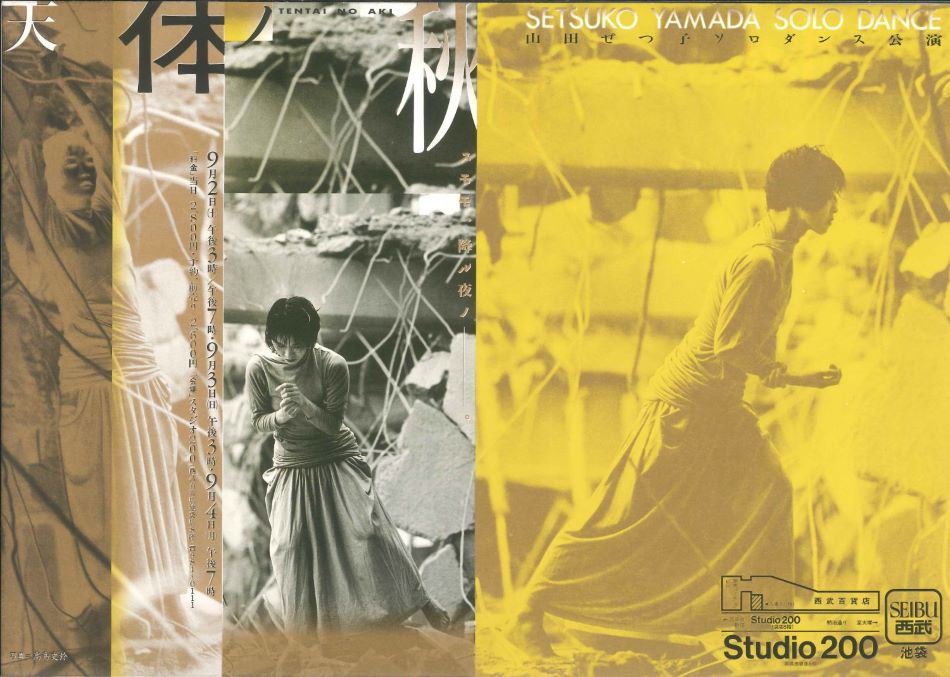
- Performer(s)
- Setsuko Yamada
- Director/Choreographer
- Setsuko Yamada
- Venue
- Studio 200
- Year performed
- 1989
-
Tengu
Live improvised performance with Tadashi Endo, Aki Takase and Itaru Oki. It was presented at the first Mamu Festival, an annual "butoh and jazz" festival held in Göttingen, Germany, which invited butoh dancers to perform alongside jazz musicians.
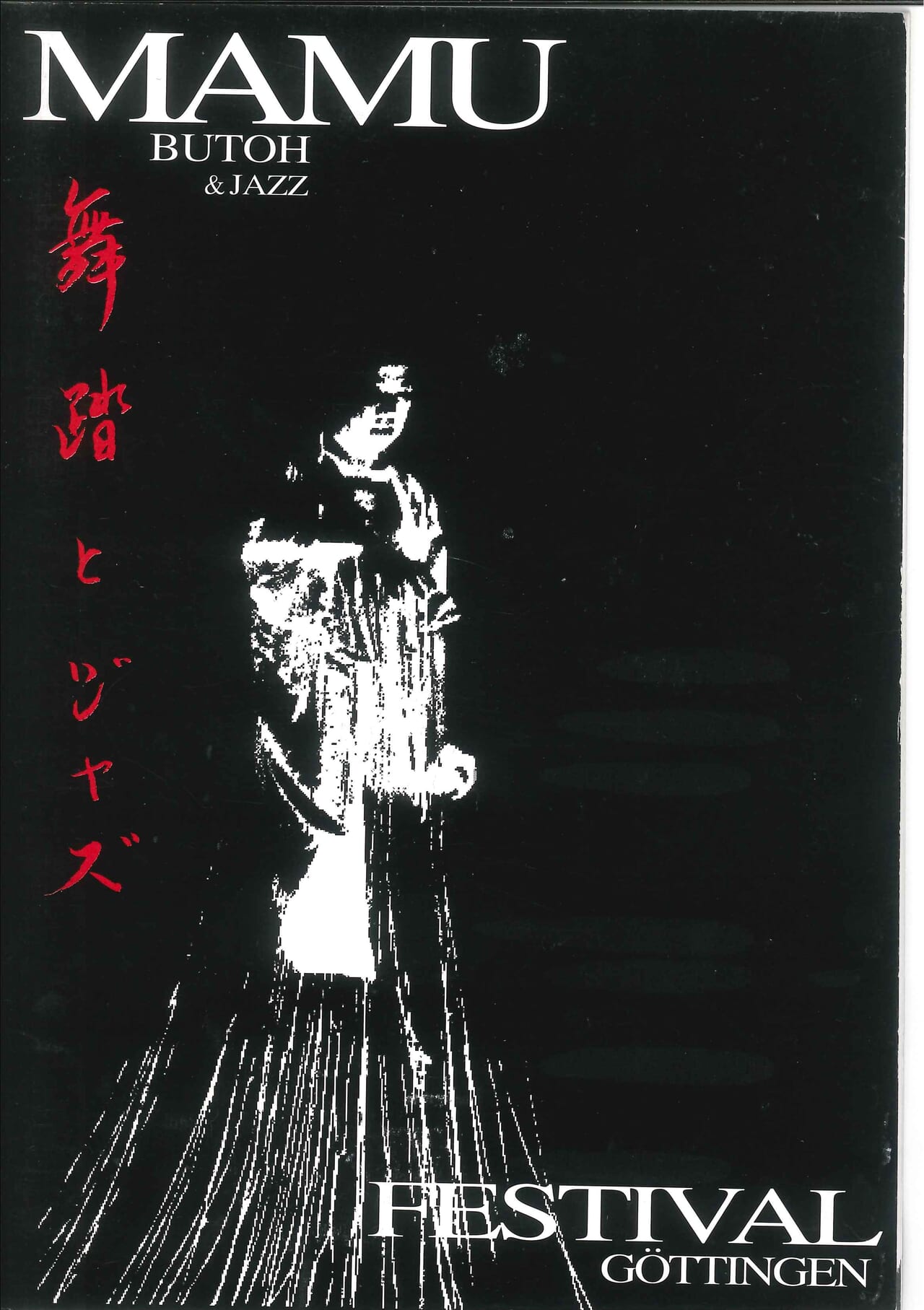
- Performer(s)
- Tadashi Endo (Butoh Centre MAMU)
- Director/Choreographer
- Tadashi Endo
- Venue
- Junges Theater Göttingen
- Year performed
- 1992
-
10 Motions
A solo piece, composed of 10 movements in various combinations.
-Participated in the 80 Summer/Autumn Dance Collection.
- Performer(s)
- Bonjin Atsugi
- Director/Choreographer
- Bonjin Atsugi
- Venue
- Sanbyakunin Theatre
- Year performed
- 1980
-
Television like Minakata Kumagusu: When People Die, They Become Stars (open-air version)
A creation myth inspired by the wide-ranging, interdisciplinary curiosity of the naturalist Kumagusu Minakata. First performed in 1984, it was later staged at the inaugural Tokyo International Theatre Festival in 1988, in a massive tent where temperatures soared to nearly 50°C. "There is no group in the world so foolish as Byakko-sha in failing to achieve its purpose" (Bessatsu Taiyo 60's-90's, Heibonsha, 1991).
The video here is recorded from the performance at Tankaku Castle Park in Shingu (Wakayama Prefecture), and was one of three outdoor productions held to commemorate Byakko-sha’s 10th anniversary. The other two performances took place in Fujisawa (Kanagawa Prefecture) and Tanabe (where Minakata once lived in Wakayama Prefecture).
- Byakko-sha 10th Anniversary + 50th Anniversary of the Death of Kumagusu Minakata: Contagious Media Trilogy I, Volume - Heaven
- Kumano Kodo Pier and Kodo Festival ~Prayers to the Sky~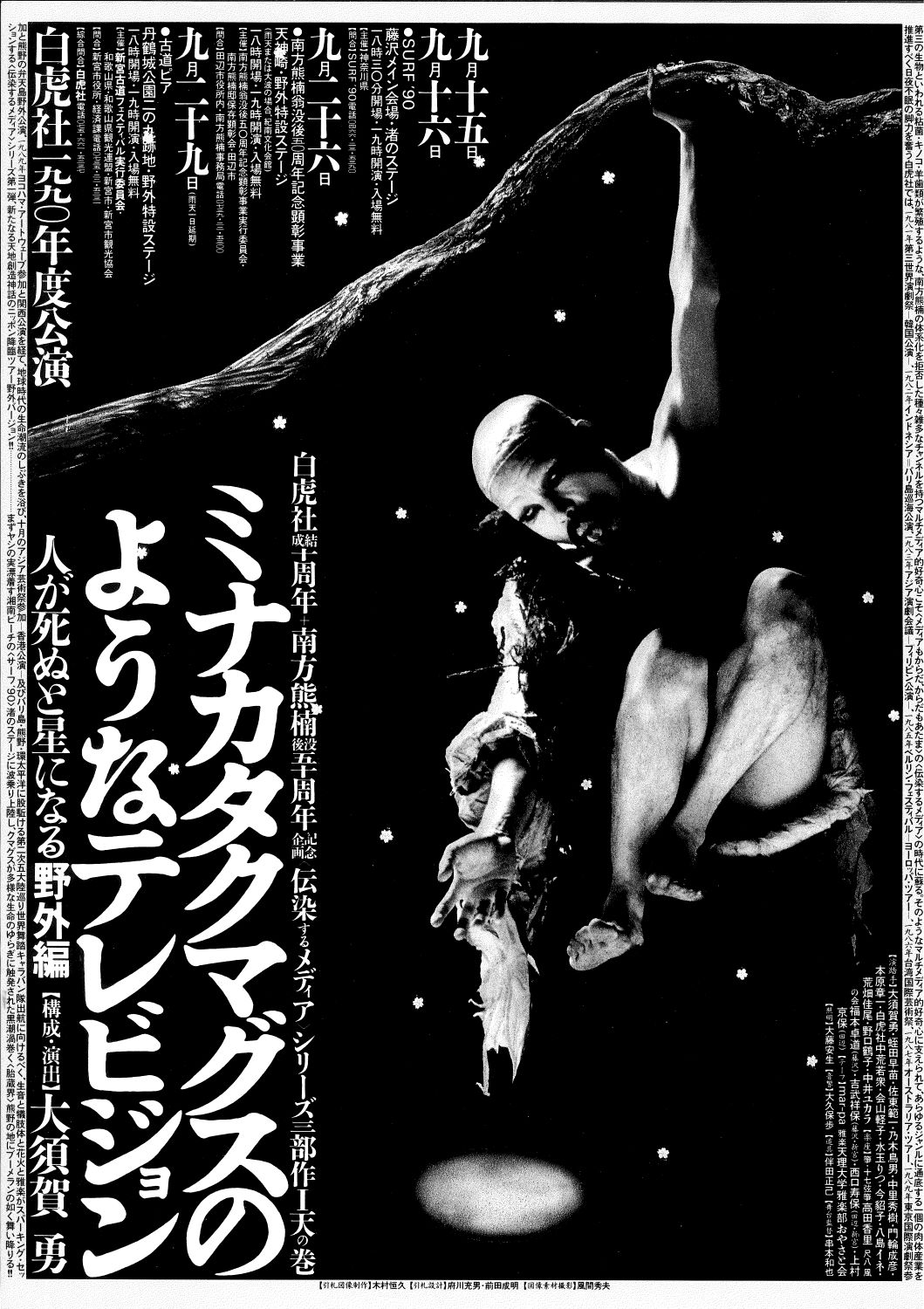
- Performer(s)
- Byakko-sha
- Director/Choreographer
- Isamu Osuka
- Venue
- Temporary outdoor stage at the Tankaku Castle Park
- Year performed
- 1990
-
Teleport TBS 6
As an introduction to butoh, parts of the Butoh Festival '85 were shown on Teleport TBS 6, a local news programme on the TBS TV channel. It included commentary by Tatsumi Hijikata, Miyabi Ichikawa, Akaji Maro, Teru Goi and Min Tanaka, as well as shots of Dairakudakan and Maijuku's rehearsals. It provides a glimpse into the butoh of that period.
- Covering Butoh Festival '85: Collection of Confessions Seven Seasons and Castles- Performer(s)
- Nippon Cultural Centre
- Year performed
- 1985
-
Tefutefu 7
Kisanuki Kuniko began her experimental solo dance series Tefutefu at 23 years old in 1982, exploring the theme of where she is from. 'Tefutefu 7' is the seventh work in the series, a story of rebirth in which her body crawls out and howls, following the various lights and darks explored in the previous work 'Tefutefu 6'. If the series up to 'Tefutefu 6' were a series of wild imaginings, 'Tefutefu 7' is an internal reality that emerged out of the ashes of the previous works.
- Kisanuki Kuniko Solo Dance Performance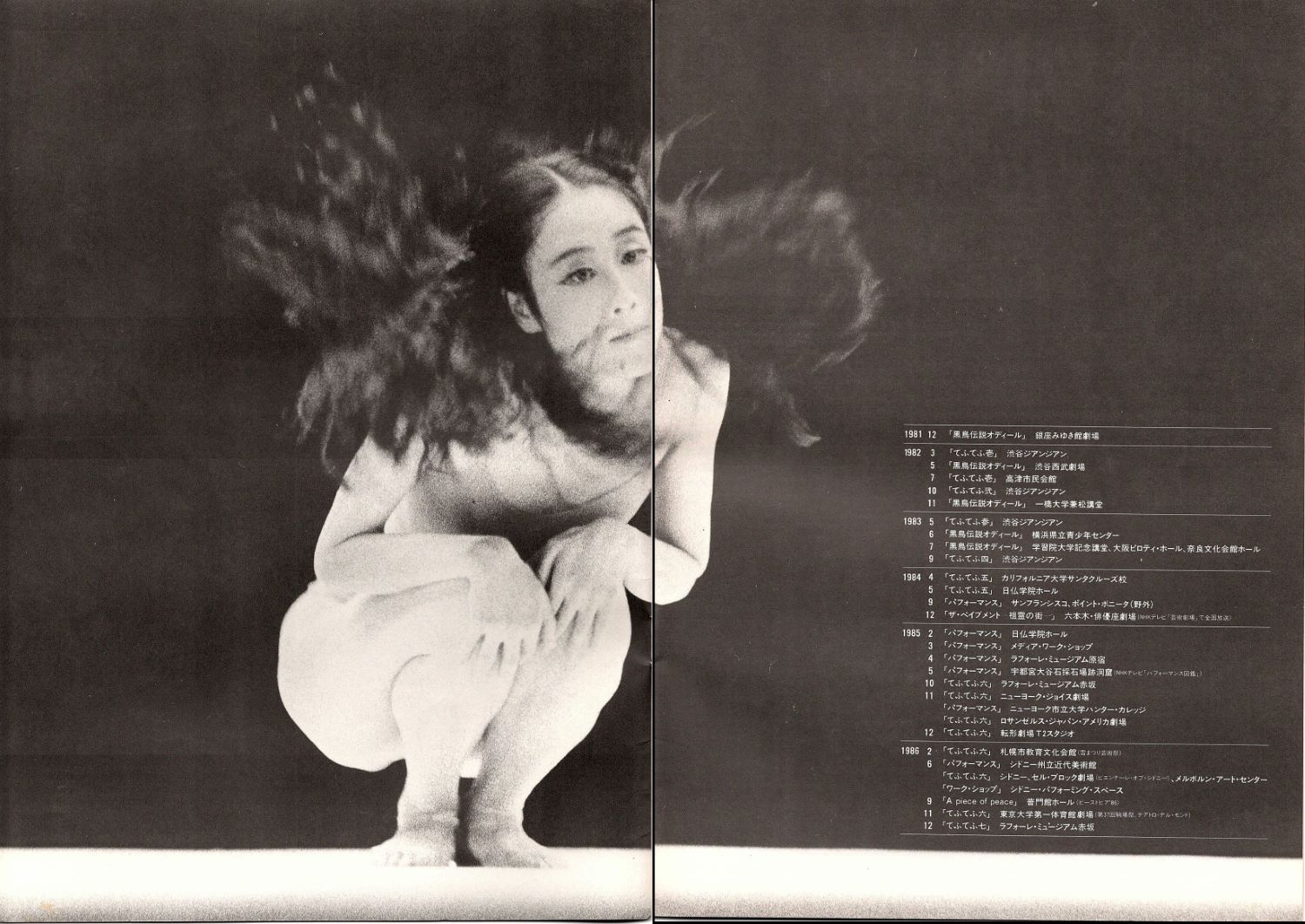
- Performer(s)
- Kuniko Kisanuki
- Director/Choreographer
- Kuniko Kisanuki
- Venue
- Laforet Museum Akasaka
- Year performed
- 1986
-
Tao
Katsuko Orita is a creator of innovative contemporary dance. This new work 'Tao', bring the ceremony of her 1979 piece 'City of Memory' and transforms it in a more open space. It is an exploration of what can occur when the internal mechanisms and inherent drama of human beings intersect, which has been externalised and manifests in work of the dancers and choreographer. Tao shows ancient dreams to heretics whose memories are stuck in the past, opening their minds to the future. (Taken from the performance program)
-Presented at the Orita Katsuko Dance Performance as part of the Dance Performance Tokyo '85 Festival of Tao.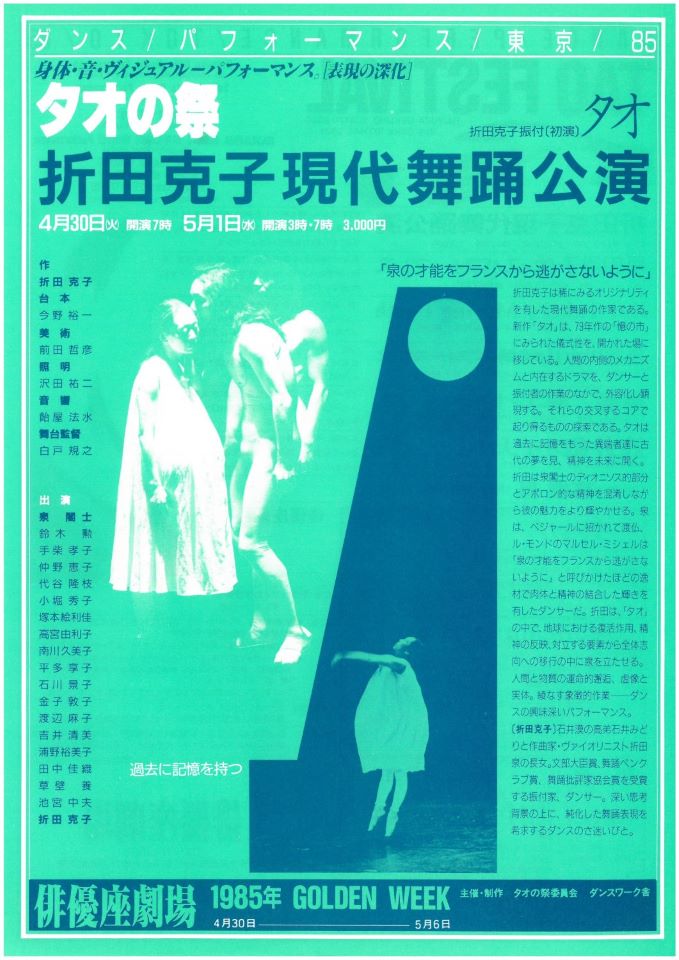
- Performer(s)
- Midori Ishii and Katsuko Orita Dance Studio
- Director/Choreographer
- Katsuko Orita
- Venue
- Haiyuza Theater
- Year performed
- 1985
-
TANIGUKU
Butoh theatre by Butoh Art Company TondeKarashizuka, inspired by the novels of Kenzaburo Ooe, Dojidai gemu [The Game of Contemporaneity] and Sui Shi [Death by Water]. Drawing inspiration from the 3,300m² terraced rice fields of Tsubono Village in Matsunoyama (Tokamachi City, Niigata Prefecture), the lives of the locals, local folk tales, and the life of TondeKarashizuka founder Toyo Matsubara, this work was brought to life with the support of musician Yuji Murai, who provided the performance space, the cooperation of the Tsubono Village residents, and collaboration with artist Satoshi Iwama, who runs the Sato Matsuri festival in the same village. The performance, which took place in the summer of 2012, was the culmination of a month-long residency and preparation involving 60 people, including 13 performers, 4 musicians, 3 set designers, construction staff, and others. "Taniguku" is an old term for a toad.
-Outdoor performance by Butoh Art Company TondeKarashizuka - Rice Field Theatre - Taniguku
-Performed at Sato Matsuri (24-27 August) in Tsubono Field Park (work no. Y087 / Satoshi Iwama) as part of the Echigo-Tsumari Art Triennale 2012. During the performance, the animation "Kagee no Machi "[Shadow Town], created by artist Kenichi Aoyama, was projected onto a cliff.
-Echigo-Tsumari Art Triennale 2012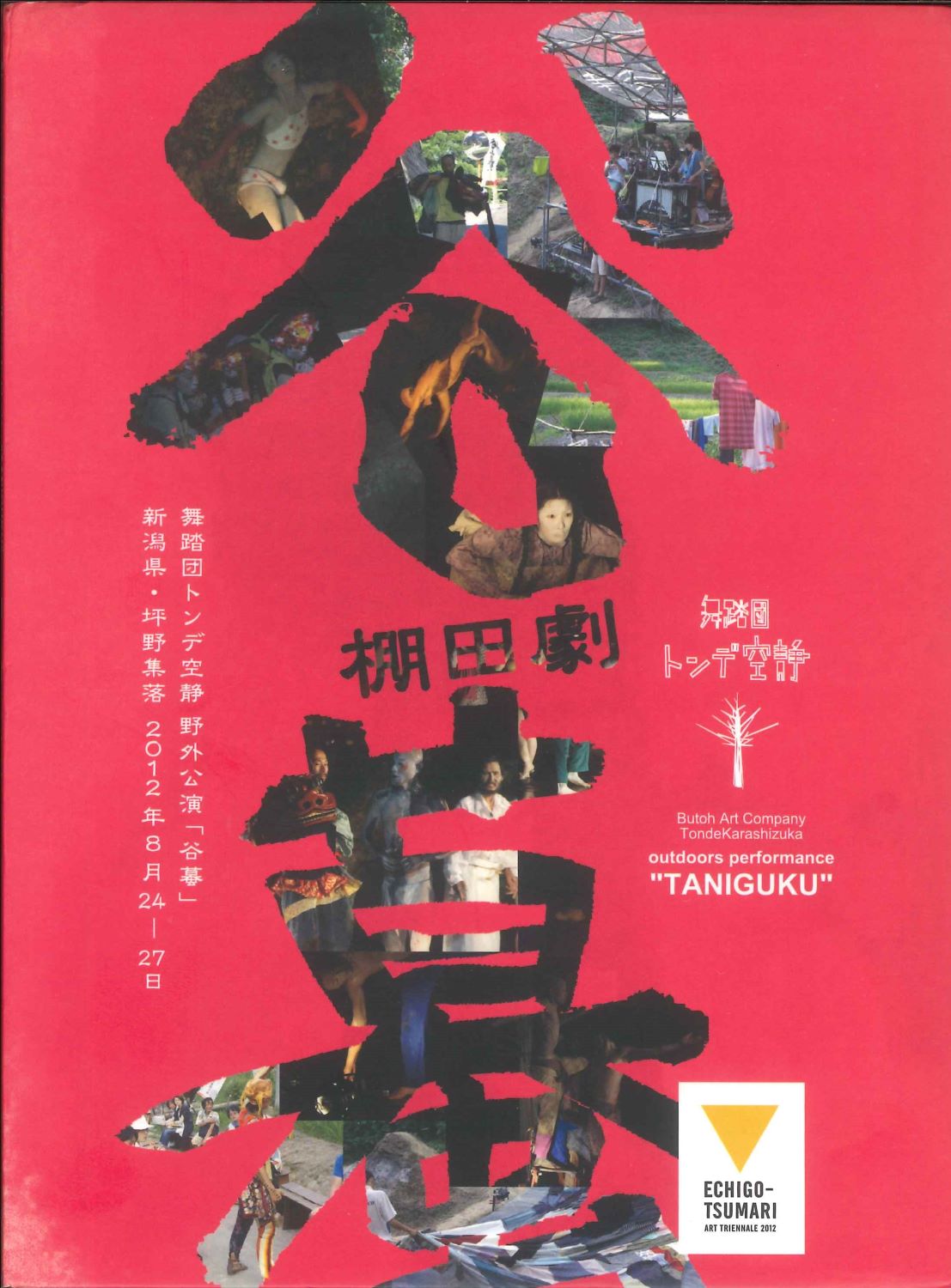
- Performer(s)
- Toyo Matsubara
- Director/Choreographer
- Toyo Matsubara
- Venue
- Tsbono field park
- Year performed
- 2012
-
Tale of Warazu
Presented as part of the 1st OSAKA DANCE EXPERIENCE, a festival that ran for 6 years from 1995 to 2000 with the aim of re-exploring butoh. The butoh group Kobuzoku Arutai (Altaic), led by Kuritaro, had moved from Hokkaido to Kansai the previous year when Kuritaro moved to Tamba. 'Warazu' means 'straw' in the local Tamba-Sasayama dialect. While working in agriculture and construction, Kuritaro wanted to make a piece themed around peasants and the countryside, and created this work about seeking inner salvation from the inescapable reality of such a life.
- 1st OSAKA DANCE EXPERIENCE: Performance by Kobuzoku Arutai (Altaic)- Performer(s)
- TORII HALL
- Director/Choreographer
- Kuritaro
- Venue
- TORII HALL
- Year performed
- 1995
-
Takazashiki
This piece is based on the image of a falconer in northern Japan, and this image in turn comes from when Hijikata Tatsumi brought a live turkey to 'Shiokubi', the opening performance of Hoppo Butoh-ha in Yamagata in 1975. It was kept in the rehearsal hall, where it died. Hijikata changed the entire choreography and Yuki Yuko, who played the role of hawk as well as falconer's wife, recalled that the performance was so driven it was as though Hijikata's spirit had possessed her.
- Bishop Yamada Butoh Performance: Hearse of Four Seasons Part 1 - Spring
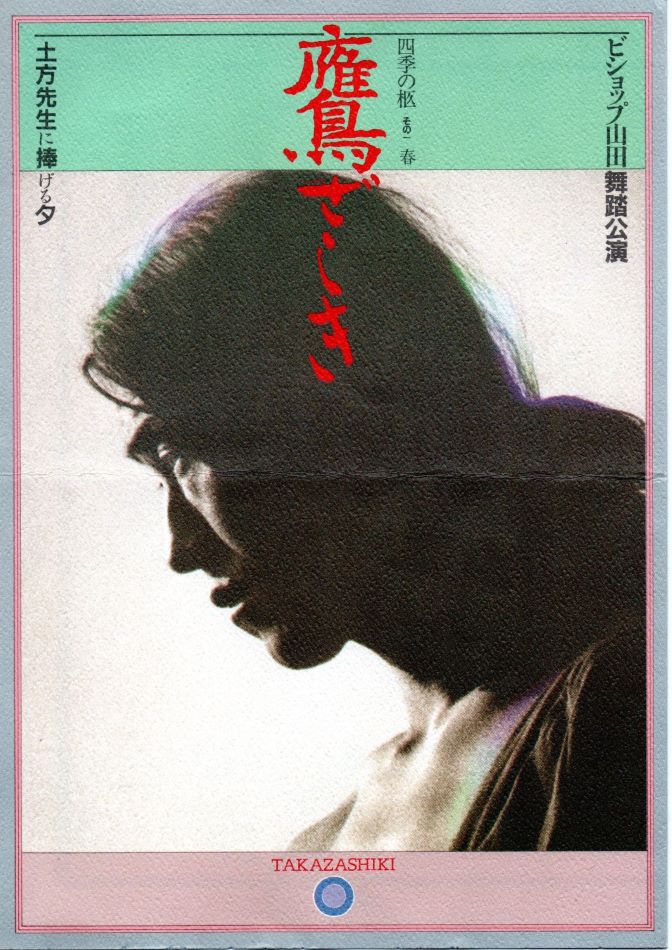
- Performer(s)
- Hoppo Butoh-ha
- Director/Choreographer
- Bishop Yamada,Tatsumi Hijikata
- Venue
- Sogetsu Hall
- Year performed
- 1984
-
TABULA RASA
Solo dance developed around the theme of "returning to a blank slate", accompanied by a live accordion symbolising breath. First performed in 2005, two versions were then developed in 2006 (one with live music, the other with recorded music) for presentation in Portugal. It was performed again in Tokyo in 2008, then revised for a 2011 performance as a memorial for the Great East Japan Earthquake. The documentation here is from the 2011 version.
2006: Invited by 'a sul' International Contemporary Dance Festival Portugal to perform in Faro and Loulé (Portugal).
-IKUYA SAKURAI DANCE SOLO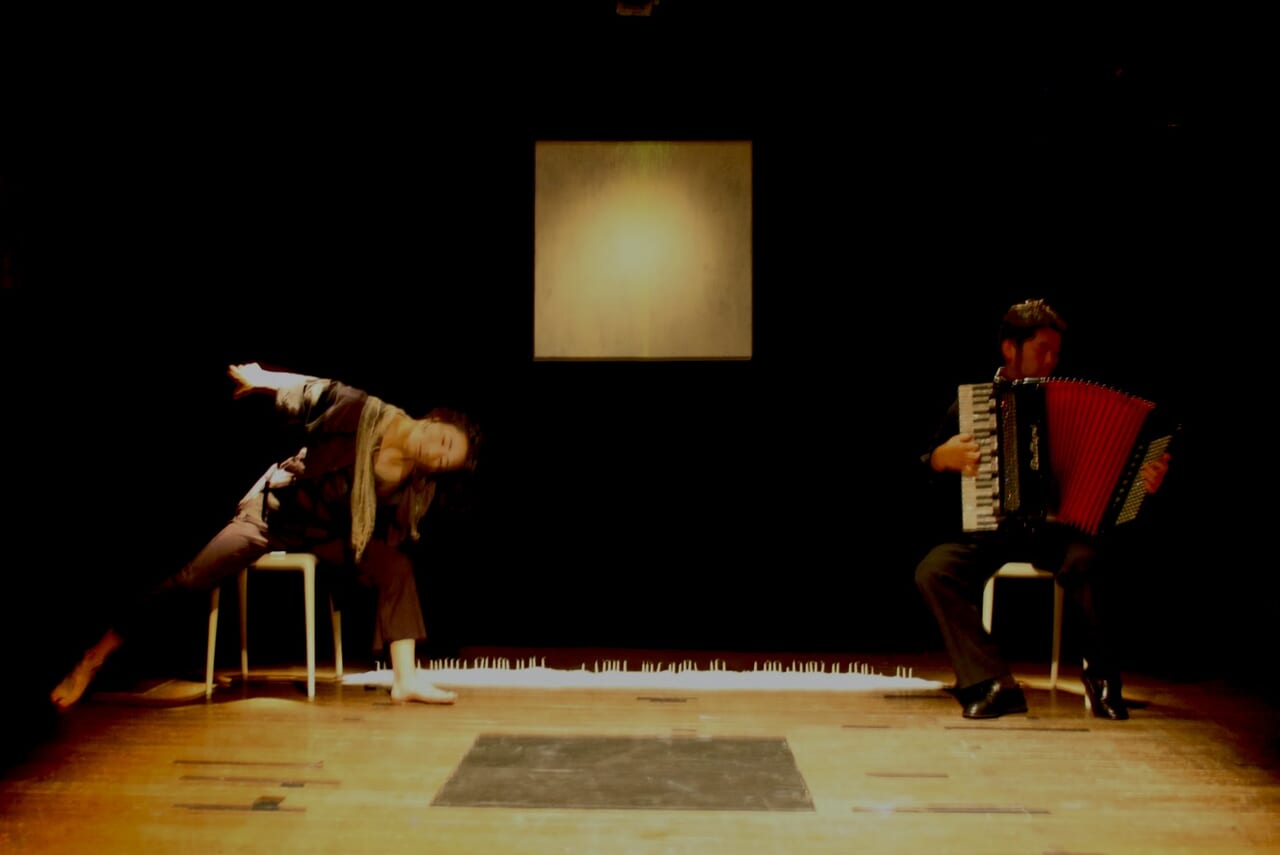
- Performer(s)
- Ikuya Sakurai
- Director/Choreographer
- Ikuya Sakurai
- Venue
- plan-B
- Year performed
- 2011
-
A Table, or A Dream of Fetus
A group dance piece first performed in 1980 by Kazuo Ohno and some of his students at the same Nancy International Theatre Festival where Ohno had made his international debut. It is thought to have been performed to a select few people after returning from the month-long tour at Ohno's studio in Yokohama, but the date of this performance is unknown.
The cast as listed in the programme for the performance at the Nancy International Theatre Festival is as follows:
Fetus / Horse: Kazuo Ohno
Grim Reaper: Tokuji Ikebe
The Sun: Moritsuna Nakamura and Minoru Hideshima
Madwoman who gives birth to the Sun, mother of the fetus: Mitsuyo Uesugi
- Presumed to have been staged around July 1980.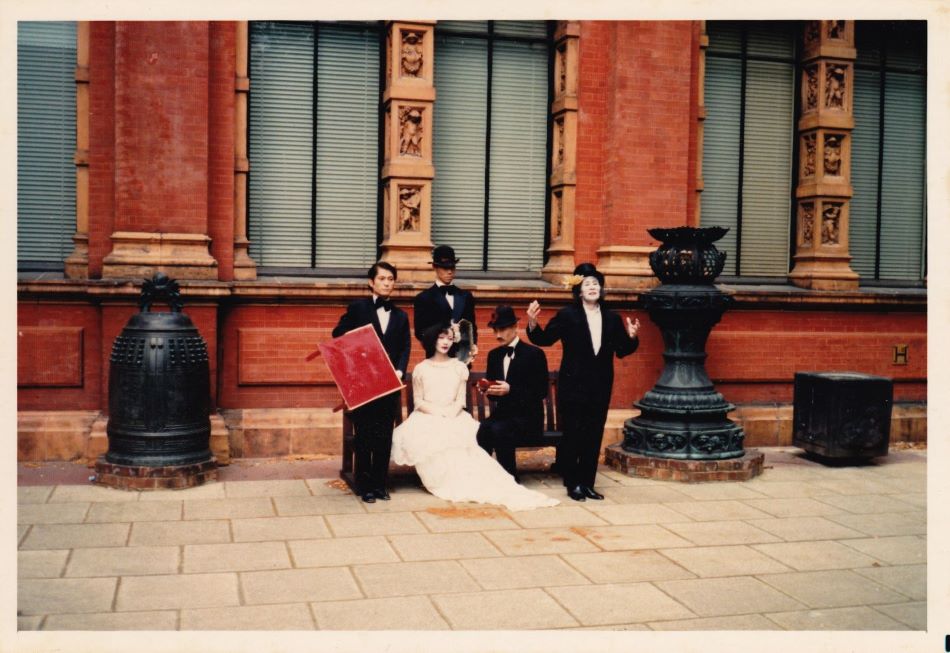
- Performer(s)
- Kazuo Ohno Dance Studio
- Director/Choreographer
- Kazuo Ohno
- Venue
- Kazuo Ohno Dance Studio
- Year performed
- 1980
